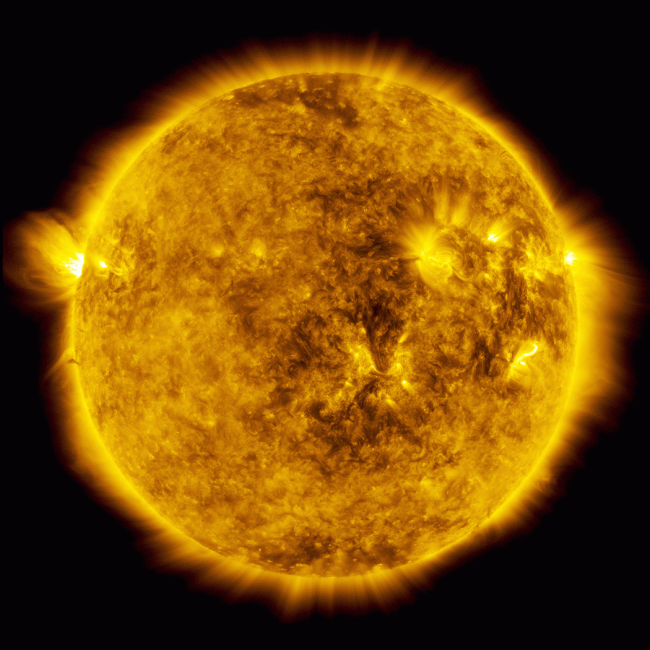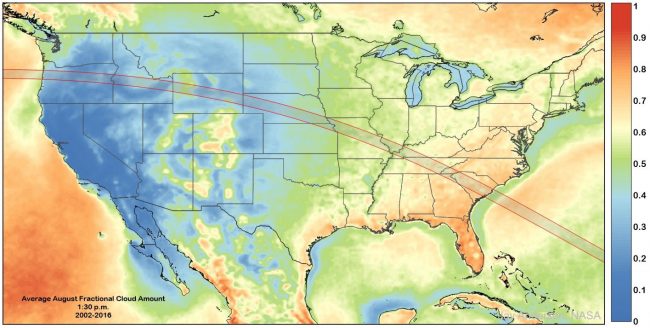
Solar eclipses happen almost every year somewhere on earth. There was a total eclipse in February 1979 in the United States. But the last time a total solar eclipse took place across the entirety of the continental United States was on June 8, 1918, when it started at South Bend, Wash., near the mouth of the Columbia River, and cut right across Orlando and central Florida, with the shadow of the moon traveling–as it will again next week–at about 33 miles per second.
That day President Wilson attended the annual baseball game between Democratic and Republican lawmakers in Washington–a game that Democrats won, 19-5, and that was called after six and a half innings supposedly “on account of darkness,” a New York Times report of the game read, “though play ended long before the sun went into eclipse.”
The maximum total eclipse time for that one was a mere 112 seconds. Next Monday’s best and longest eclipse time will happen near Hopkinsville, Ky., for 160 seconds, or two minutes and 40 seconds. There won’t be a total eclipse in Palm Coast or anywhere in Florida. Charleston, S.C., is the furthest point south where you could see it in its totality. But it’ll be impressive all the same, reaching around 90 percent, creating what will look like a thin, cradled crescent of a sun. It’ll start at 1:18 p.m., peak at 2:49 p.m., and end at 4:13 p.m. (See a great animation tailored for Palm Coast here.)
It’ll surely send eyes upward, squinting and, for the careless, burning. “The only safe way to look directly at the uneclipsed or partially eclipsed sun is through special-purpose solar filters, such as ‘eclipse glasses,'” NASA cautions, “or hand-held solar viewers. Homemade filters or ordinary sunglasses, even very dark ones, are not safe for looking at the sun; they transmit thousands of times too much sunlight.” (See a list of suggestions below.)
Today, the school district issued its own cautions an advisory “to make sure our students view the eclipse in the safest way possible,” coupled with a brief lesson about the eclipse (it is, after all, the school district): “First off, let’s understand what this solar eclipse is. It is when the moon passes between the sun and Earth. This blocks the sunlight from reaching earth for up to a three-hour period in a given location. What’s exciting about this particular solar eclipse is the path of totality, where the moon will completely cover the sun. It’s been about four decades since we’ve had such a wide portion of our country experience such an event.”
The time period of the eclipse locally will be approximately 1:18pm to 4:13pm, with the maximum coverage happening at 2:49pm.
“We are fortunate enough to witness the solar eclipse at about 85 percent totality,” Heidi Alves, a science curriculum specialist, says. “While this is a unique experience that has not occurred in this capacity for around 99 years, we want everyone to view this eclipse safely. We will be providing a safety information sheet available to all families in preparation for this rare event.” Principals and their staff will ensure outdoor eclipse-viewing events are done safely, the district’s release stated.
However, Superintendent James Tager says, “the instructional day for our middle and high school students will have been concluded by the time of maximum coverage. That is why it is so important for parents and guardians to speak with these students about the best way to view this event safely.”
Here are a few tips from NASA:
- Always inspect your solar filter before use; if scratched or damaged, discard it. Read and follow any instructions printed on or packaged with the filter.
- Always supervise children using solar filters.
- Stand still and cover your eyes with your eclipse glasses or solar viewer before looking up at the bright sun. After looking at the sun, turn away and remove your filter — do not remove it while looking at the sun.
- Do not look at the uneclipsed or partially eclipsed sun through an unfiltered camera, telescope, binoculars, or other optical device.
- Similarly, do not look at the sun through a camera, a telescope, binoculars, or any other optical device while using your eclipse glasses or hand-held solar viewer — the concentrated solar rays will damage the filter and enter your eye(s), causing serious injury.
- Seek expert advice from an astronomer before using a solar filter with a camera, a telescope, binoculars, or any other optical device. Note that solar filters must be attached to the front of any telescope, binoculars, camera lens, or other optics.
- If you are within the path of totality, remove your solar filter only when the moon completely covers the sun’s bright face and it suddenly gets quite dark. Experience totality, then, as soon as the bright sun begins to reappear, replace your solar viewer to look at the remaining partial phases.
- Outside the path of totality, you must always use a safe solar filter to view the sun directly.
- If you normally wear eyeglasses, keep them on. Put your eclipse glasses on over them, or hold your handheld viewer in front of them.
And don’t be superstitious. More details here. For NASA television coverage, including apps and the rest of it, go here.
If you’re stuck inside and you want to watch the eclipse online, The Times has a page rich with suggestions here.
“As the minutes passed,” a reporter covering the 1918 eclipse for The New York Times wrote the next day from the Pacific Northwest, “the landscape took the peculiar color of yellow usual at eclipses. Fifteen minutes before totality the clouds thinned still more. Nature now became hushed, the birds sang their evening song, and the cocks were heard to crow. Five minutes before the moment of totality the clouds were quite thin and only 5 degrees away from the sun the sky was brilliantly clear. Would the clouds drift and bring the sun into the blue sky? This was the anxious question.”
So it will be again.
And if you’d like to keep your eyes open for an actual, total eclipse in Bunnell, Flagler County Emergency Services’ Bob Pickering tells us that it’s only 28 years away, in 2045.
![]()






























Leave a Reply